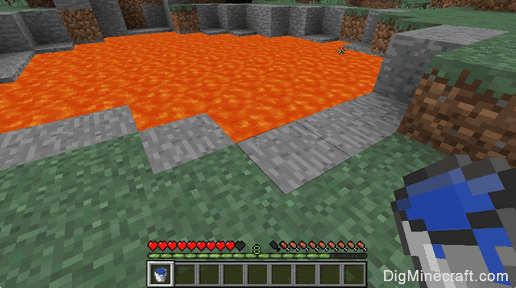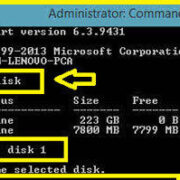Minecraft is a game that sparks the imagination, allowing players to build, explore, and create within a blocky, pixelated world. Among the myriad resources available in this virtual sandbox, obsidian stands out as a fascinating and useful material. It’s not only aesthetically striking with its dark, glossy appearance but also boasts considerable practical uses, such as crafting a portal to the mysterious Nether realm or constructing an enchanting table. However, creating obsidian is not as straightforward as gathering ordinary resources. Here, we’ll unravel the mystery of obsidian production, offering you a guide through various means and valuable strategies to obtain this elusive block.

Lava Meets Water
Obsidian formation in Minecraft hinges on the meeting of two specific substances: lava and water. When water touches a lava source block, it’s instantly transformed into this dark, durable material.
Detailed Steps:
- Locate a pool of stationary lava, not flowing lava which won’t turn into obsidian.
- Equip a bucket or find a natural water source.
- Pour water onto the lava source blocks. Ensure that the water flows directly onto the still lava to create obsidian.
- Remove the water once the lava has turned into obsidian.
Summary:
This method is straightforward and generally safe, making it ideal for beginners. On the flip side, finding enough lava source blocks can sometimes be challenging.
Lava Bucket Technique
Creating controlled obsidian can also be achieved by bringing the lava to the water using buckets.
Detailed Steps:
- Fill a bucket with lava from a lava pool.
- Position yourself near water, or place water using another bucket.
- Pour the lava onto a surface, ensuring it doesn’t flow.
- Quickly place water over the placed lava to convert it into obsidian.
Summary:
The Lava Bucket Technique offers precision but requires more preparation, as you need multiple buckets and a bit more skill to prevent accidental burns.
Nether Portal Remnants
Destroying a Nether portal’s corner blocks once activated provides natural obsidian without needing water or lava manipulation.
Detailed Steps:
- Build and activate a Nether portal.
- Break the corner blocks of the obsidian frame you’ve just created.
- You now have four obsidian blocks; however, this method is limited to the number of portals you can create.
Summary:
This approach is resource-saving, although somewhat limited and typically not the primary choice for obsidian farming.
Cavern Mining
Exploring underground caverns and ravines can lead you to places where water naturally meets lava, creating obsidian.
Detailed Steps:
- Gear up with adequate supplies and armor.
- Explore caverns until you find natural obsidian formations.
- Mine the obsidian using a diamond or netherite pickaxe.
Summary:
Mining in caverns could be dangerous due to hostile mobs but is a natural, exploration-based method to find and harvest obsidian.
The Underwater Strategy
Placing and mining obsidian underwater reduces the chance of falling into lava but requires water breathing abilities or potions.
Detailed Steps:
- Prepare water breathing potions or equipment.
- Place lava in a controlled environment underwater.
- Use your water breathing abilities to mine the resulting obsidian safely.
Summary:
This method is relatively safe from lava hazards but demands extra preparation like brewing potions or enchanting gear.
Artificially Constructed Pool
Constructing your own lava pool allows you to create a dedicated obsidian farming area.
Detailed Steps:
- Build a containment area for lava using non-flammable blocks.
- Fill this with lava using buckets.
- Pour water over it to transform the lava into obsidian.
Summary:
Building an artificial pool for obsidian generation is safe and controlled, yet time-consuming due to the amount of lava transporting required.
Obsidian Generator
There used to be designs for devices called “obsidian generators” that would exploit game mechanics; however, please note that many of these no longer work due to updates that have patched such mechanics.
Detailed Steps:
- Research current obsidian generator designs that work with the latest Minecraft updates.
- Gather the necessary materials and build the generator accordingly.
- Use the generator to produce obsidian.
Summary:
While generators can be efficient, they often rely on bugs or glitches that can be fixed in updates, so this method may not be always reliable.
Using Village Blacksmiths
Some village blacksmith buildings have lava that the player can convert into obsidian right on the spot.
Detailed Steps:
- Locate a village with a blacksmith.
- Use a bucket to pour water over the blacksmith’s lava and turn it into obsidian.
- Mine the created obsidian.
Summary:
This is a quick and easy method, though limited by the availability of villages and their blacksmiths’ lava.
Pillaring Above Lava Lakes
In the Nether, obsidian can sometimes be found naturally where end portal frames have generated above lava lakes.
Detailed Steps:
- Locate an end portal frame above a lava lake in the Nether.
- Carefully pillar out to harvest the obsidian.
- Make sure to not fall into the lava while mining.
Summary:
This method is risky due to the Nether’s dangerous environment and should be attempted only by experienced players.
Ruined Portals
Ruined Portals are naturally occurring structures consisting partly of obsidian which players can mine.
Detailed Steps:
- Explore the overworld or the Nether to find a Ruined Portal.
- Mine the obsidian blocks that are part of the structure.
Summary:
While convenient and also providing a chance to find a chest with valuable loot, this method only provides a finite amount of obsidian.
Minecraft’s blocky world is teeming with resources and possibilities, and obsidian is a prime example of a resource that offers both challenges and rewards to the creative player. These techniques span from the simplest water-meets-lava interactions to more sophisticated strategies involving construction and exploration. The worthiness of obsidian, from crafting enchanting tables to creating Nether portals, makes it a sought-after commodity. However, the risks involved in obtaining it, whether from potential lava mishaps or hostile environments, remind us of the adventurous spirit Minecraft evokes.
In conclusion, the journey to procure obsidian reflects Minecraft’s core appeal—a blend of creativity, strategy, and adventure. Whether you’re a seasoned miner or a curious newcomer, the pathways to obtaining this sleek, powerful block are varied and filled with opportunity. There’s a method to suit every playstyle, ensuring that the quest for obsidian remains as rewarding as it is engaging.
FAQs:
-
Why do I need a diamond or netherite pickaxe to mine obsidian?
Obsidian is one of the hardest materials in Minecraft, and only a diamond or netherite pickaxe has the necessary strength to break it and collect the blocks. -
Can I make obsidian without water?
No, water is necessary to convert lava source blocks into obsidian. -
What happens if I pour water on flowing lava instead of a source block?
Flowing lava turns into cobblestone or stone when water touches it; therefore, it’s crucial to use stationary lava source blocks for creating obsidian.









